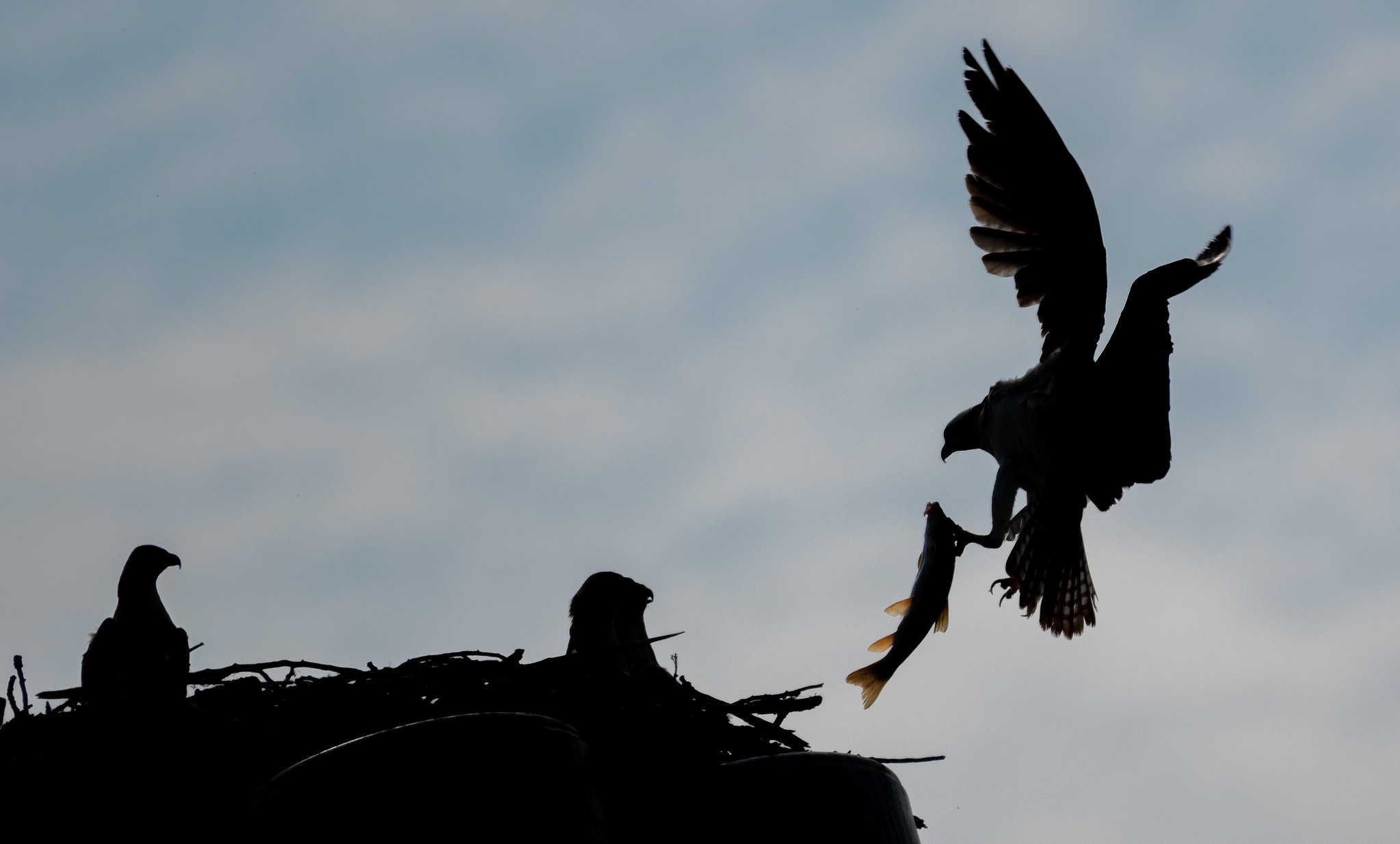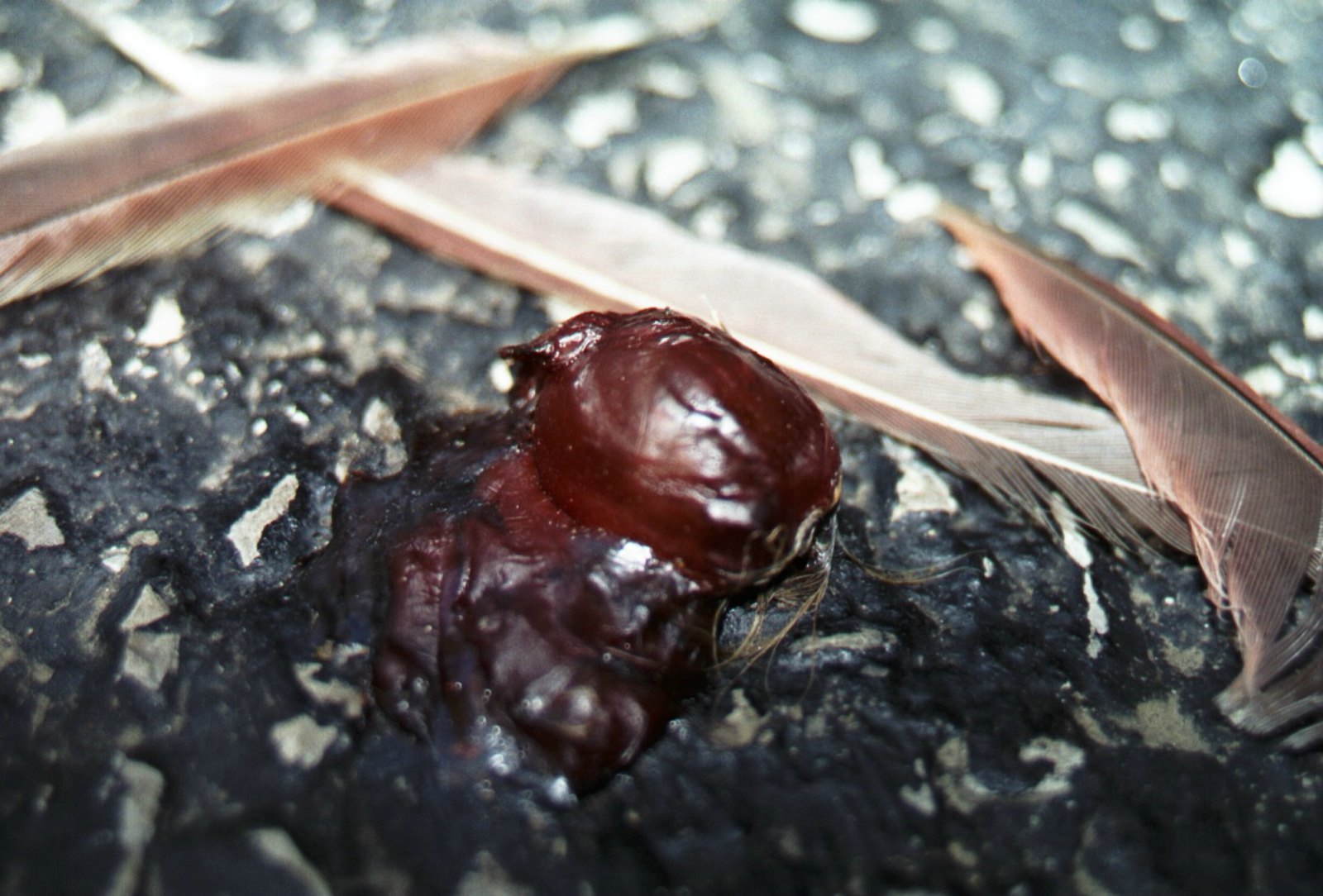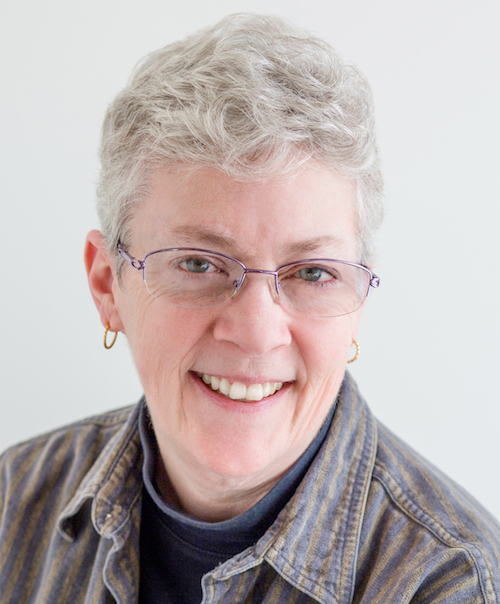Essay by Beth Richards
Witnessing Life and Death on the Road Ahead

Something was in the road ahead. Not a branch from the dead maple my neighbors refused to cut down. Taller. Not their pale-eyed dog that defied death by chasing cars and snapping at the spinning wheels. Smaller. Not a squirrel on its hind legs, testing the air before a tail-whipping dash across the street.
I slowed the car. Stopped.
A hawk squatted in the middle of the street, its outsized talons splayed across the feebly struggling body of a robin. The robin moved; the hawk dug its talons deeper into the robin’s back. The hawk didn’t flap its wings exactly, more like shrugged its shoulders, keeping its grip and balance. One eye watched my car. The other monitored the robin. Moments passed. The hawk moved like it was giving a massage. Shrug, push. Shrug. Push.
• • •
I grew up in the oak scrub and pine woods of northwest Florida, surrounded by the squabbles of mockingbirds and blue jays. Herons glided low, swinging their long legs down like airplane landing gear and stalking the edge of the pond behind our house. A bike ride down a nearby road inevitably stirred a crowd of turkey vultures clustered as thick as bees as they dismantled the most recent roadkill. They dove into the scrum of wings and feet and pulled out a meal, string by moist string. I hated their wattled, warty heads and their stink, but I admired their tenacity. They lurched away only seconds before my bike arrived, swaggering into the ditch beside the road or—if I yelled at them—taking off in a loud, ungainly flapping of wings. I held my breath and pedaled past the roadkill. As I looked back, they sifted through the air, like ash, and resumed feeding. From a distance their necks looked like pistons.
My bird-loving aunts taught me how to discern an osprey from an eagle in flight. The smaller osprey snags a fish with one talon, then tosses the fish in the air, catching it by both feet, aiming the fish’s snout into the wind to reduce drag. The eagle catches the fish the same way, but doesn’t bother with aerodynamics. It just muscles its catch through the air—the fish writhing and yanking the eagle up and down—then settles into the top of a nearby tree. I never found osprey leavings, but a jumble of fish bones always lay underneath the tree to which the eagle had flown, a few scales shimmering in the sun.
• • •
I sat in my car for so long that the neighbor’s one-eyed dog came to the curb to watch. The hawk didn’t move but expanded its visual patrol: Robin, dog, me. Robin, dog, me. The robin flinched but with less strength and less often.
• • •
Raptors include any bird of prey, from eagle to owl to vulture to falcon to hawk. The word comes from the Latin “to seize.” I got this from a book but learned most of what I know about birds from riding shotgun with my aunt, who defies gravity and most laws of highway safety while hanging out her SUV window and pointing: “Sharp-shinned! Red-tailed!” She can identify them by sight and call and whether they’re mature, immature, or breeding. I tell her about the pair of red-tailed hawks that have built a nest on a ledge just outside the president’s office at the school where I teach. One day the male, the smaller of the pair, swooped over my shoulder, so close that I heard the wind whistle through his wings. Two feet ahead of me, the hawk extended its long legs and talons and plucked a young squirrel from the ground. I’ll admit it, I looked over my shoulder, just to make sure that (larger, stronger) Ms. Red-Tail wasn’t coming for me.
The bird in the middle of my street was not a red-tailed but a smaller Cooper’s hawk, an accipiter—a “true” hawk, if you ask Mr. Audubon. This was an immature bird, with yellow eyes, brown back, and white front that looked like someone had splashed mud on it. In another year, if it can find enough to eat and doesn’t get hit by a car—which happens when people don’t stop like I did—it will take on adult plumage: blue-gray back feathers with distinctive bars across a tail that is rounded like the end of a garden spade. Unlike a sharp-shinned, the Cooper’s tail has no notch. If the Cooper’s lives to adulthood, its eyes will turn blood red.
• • •
The robin was almost still. The neighbor’s dog lost interest and wandered off. The hawk eyed the robin, then me. Shrug, push.
• • •
I recalled my neighbor’s phone call a few days before, when she told me to look out at the fence between our houses. “Cooper’s!” my neighbor whispered into the phone. It perched on a branch above her bird feeder, its head swiveling to detect any motion. But no other feathered being was in sight. The squirrels and chipmunks that scavenged seeds underneath the feeder had vanished as well.
• • •
The robin lying on my street must have been taken by surprise.
• • •
I’m not sure for how long I stared at the Cooper’s hawk, its calm contemplation of the robin beneath it, my car, and the remainder of the early morning street.
The robin convulsed once more. The hawk tilted its head toward me, then extended its broad wings. With two strong beats, it lifted off the ground. Another two beats, and the hawk glided across the street, the robin dangling beneath. Two more wing beats, and the hawk tilt-glided between two houses and disappeared into the trees.
What remained was this: The unimaginable impact had stripped the robin’s underfeathers, mixed them with its blood, and pasted them to the pavement—a ring of feathers, a perfect halo. The downy edges lifted, one by one, in the breeze.

Art Information
- “Wheels Down, Flaps Up” © Sunny Lo; Creative Commons license.
- “Stomach, Feathers” © Stephanie GA; Creative Commons license.
 Beth Richards’ work has appeared in Fourth Genre, Solstice Literary Magazine, the Cincinnati Review, as well as two anthologies: Coming out in the South (New South Books) and Into Sanity: Essays About Mental Health, Mental Illness, and Living in Between (Talking Writing). She earned an MFA from the Solstice Creative Writing Program at Pine Manor College and teaches at the University of Hartford in West Hartford, Connecticut.
Beth Richards’ work has appeared in Fourth Genre, Solstice Literary Magazine, the Cincinnati Review, as well as two anthologies: Coming out in the South (New South Books) and Into Sanity: Essays About Mental Health, Mental Illness, and Living in Between (Talking Writing). She earned an MFA from the Solstice Creative Writing Program at Pine Manor College and teaches at the University of Hartford in West Hartford, Connecticut.
